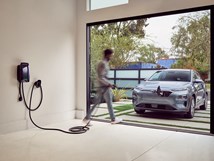Ford Will Prepare Michigan Plant to Make EVs
Ford Motor Co. says it will spend $850 million over the next four years at its assembly plant in Flat Rock, Mich., mainly to prepare it to make all-electric vehicles.
#hybrid
Ford Motor Co. says it will spend $850 million over the next four years at its assembly plant in Flat Rock, Mich., mainly to prepare it to make all-electric vehicles.
The four-year investment will include retooling the facility to make the conventionally powered next-generation Mustang sport coupe.
The Flat Rock expansion will add a second shift at the complex and create as many as 900 jobs there. Most of the spending will prepare the factory to make an array of electric models that share the carmaker’s next-generation EV platform.
The facility will become Ford’s second in North America to make EVs. The company expects to debut its first all-electric model—a high-performance SUV made in Cuautitlan, Mexico—next year.
Separately, Ford says it will spend roughly $50 million to set up an unspecified manufacturing center in southeast Michigan to make autonomously driven vans. The vehicles will be used in the robo-shuttle service Ford expects to launch in 2021.
The carmaker also announced it will begin supplying North America in 2021 with its next-generation Transit Connect small vans from its factory in Hermosillo, Mexico. Ford notes that doing so will raise the local content of the van in support of the pending U.S.-Mexico-Canada trade agreement.
RELATED CONTENT
-
Startup Readies Solar-Powered EV
Germany’s Sono Motors GmbH says it has received 5,000 orders for its upcoming Sion electric car, which can be partially recharged by it attached solar panels.
-
Aluminum Sheet for EV Battery Enclosure
As the number of electric vehicles (EVs) is about to increase almost exponentially, aluminum supplier Novelis is preparing to provide customers with protective solutions
-
About the 2020 Lincoln Aviator
Successful vehicles tend to be those that are available on a global basis, and increasingly, those vehicles tend to be in the SUV segment writ large.








